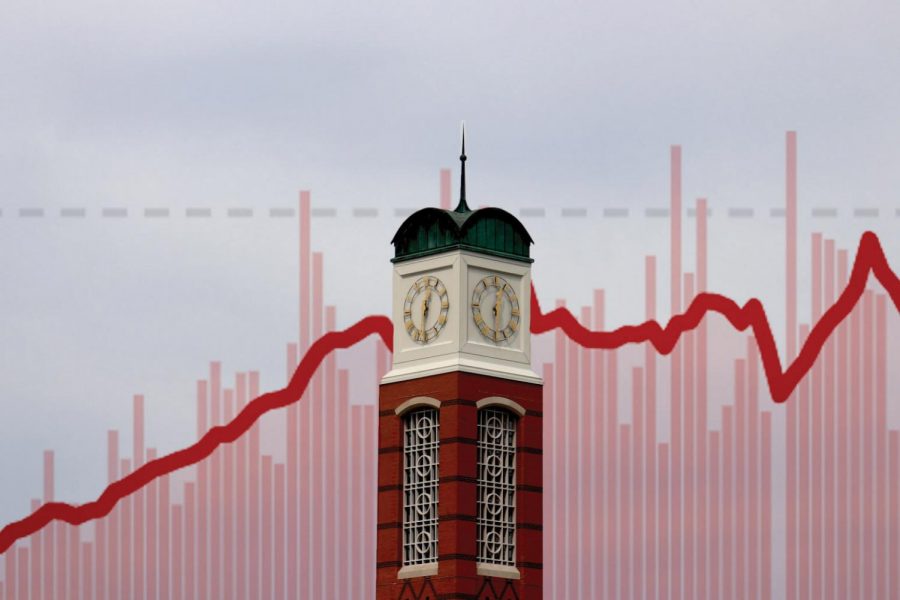Canceling classroom contact tracing signals change
Jan 31, 2022
Grand Valley State University announced they have discontinued contact tracing in classrooms, a COVID-19 mitigation strategy that informs people of potential exposure to the virus.
As of Jan. 24, the University of Michigan is continuing to contact trace, and Michigan State University appears to be doing the same, except for close-contact individuals who are fully vaccinated and boosted.
However, many institutions are no longer contact tracing, as attempting to keep track of individuals who have potentially been exposed to COVID-19 during this surge of the highly-contagious omicron variants has proven to be a difficult and resource-intensive process.
The change in GVSU’s policy was announced with multiple emails to select audiences. A Jan. 24 email to faculty shared the news, days before a Jan. 27 email went out to students. In the meantime, multiple faculty members passed on the announcement to their students, which is how some first learned of the change.
Reactions to the news were varied. The discontinuation of contact tracing in GVSU classrooms has likely flown under the radar of most students in the community. Among students who did notice, some were disappointed, while others expressed understanding or mild concern.
The decision is understandable; contact tracing is an intensive undertaking and there are other tasks the university’s Virus Action Team and COVID Awareness Team (CAT) could direct their attention towards; like booster outreach and the push for high-quality masking. Shifting their focus away from classroom exposures, the CAT can notify higher-risk exposures, like household members and unmasked close contacts sooner.
Even before the announcement, students and faculty expressed disappointment with the slow speed of GVSU’s contact tracing process. However, the rollout of the decision – informing faculty days before students – did prompt frustration, and it’s easy to conflate this decision with others that are more obviously objectionable.
This pseudo-fiasco feels emblematic of the strange period members of the GVSU community have been – and will probably continue – occupying. Michigan and the rest of the United States are between the early dark ages of the pandemic, plagued with misconceptions and confusion, and the long-awaited “new normal,” when COVID-19 and its apparently unending chain of variants become endemic and, hopefully, manageable.
Cathy Armstrong, communicable disease expert for the Kent County Health Department, said that the state of Michigan has begun to shift the responsibility of contact tracing from public health officials to the community and individuals.
“If we’re not contact tracing, at least we can identify positive cases, we can let them know what they’re supposed to do, and we do that with a survey through a text or an email,” Armstrong said. “That’s where we’re shifting to because of the capacity, but also because that’s what the future looks like.”
The problem is, many people are not compliant with other mitigation efforts like masking and vaccine requirements on their own. GVSU’s decision to discontinue contact tracing in classrooms has put protecting and informing their classmates that they may have been exposed to COVID-19 in the hands of individual Lakers.
Throughout the pandemic, GVSU has consistently credited the university’s “low” number of COVID-19 cases to students’ diligence with masking and vaccination status. With the discontinuation of contract tracing in classrooms, GVSU is signaling that it’s now largely the responsibility of students and staff to stay safe as the pandemic continues.























